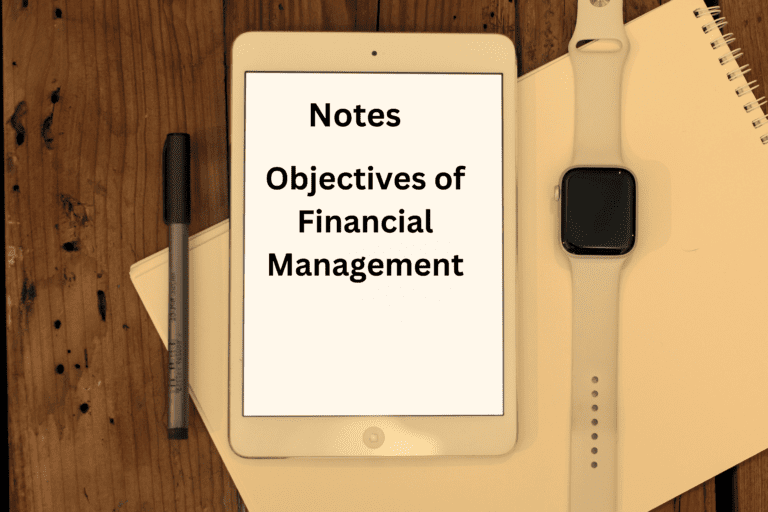Best Notes on Personnel Management | Nature and Functions -2024
Notes to Define Personnel Management
Define Personnel Management:
Personnel management is a systematic process to manage the workforce within an organization to meet its goals.
Personnel management specifically focuses on the day to day management of employees within an organization, including tasks such as recruitment, selection, training, compensation, and employee relations.
It can be seen as a key component of HRM which manages the operations of the workforce.
Personnel management is a subset of Human Resource Management (HRM), which performs a series of activities such as talent acquisition, talent management, performance management, and strategic HR planning.
Click here for: Definitions of Personnel Management
Main difference between Personnel Management and HRM:
The difference between Personnel Management (PM) and Human Resource Management (HRM) lies in how they approach employee management in organizations.
PM in general takes a reactive and administrative stance, with the main focus on routine tasks like recruitment, training, and employee relations, often without considering broader organizational goals.
In contrast, HRM adopts a proactive and strategic perspective to make sure that HR practices are in line with the organization’s overall goals.
This is to prioritize employee development and engagement for long term success.
While PM tends to view employees as resources, HRM recognizes them as valuable assets vital for achieving organizational goals.
Nature of Personnel Management
Strategic Human Resource Planning (SHRP)
Strategic Integration:
Strategic Human Resource Planning (SHRP) integrates HR strategies with the overall objectives of organization resulting in persistent success.
Forecasting Talent Needs:
SHRP involves analyzing industry trends and technological advancements to predict future talent requirements accurately to identify potential skill gaps and talent needs well in advance.
Talent Management Strategies:
This focuses on developing strong strategies for talent acquisition, development, and retention.
This strategy consist of programs such as targeted recruitment efforts, customized training and development programs, succession planning, and performance management systems,
Its aim is to ensure that the organization has the right talent in the right roles to achieve its strategic objectives effectively.
Recruitment and Selection and Evaluation
Talent Acquisition:
Recruitment and Selection focus on identifying skilled candidates to fill job openings.
This includes analyzing job requirements, posting vacancies, and sourcing candidates through various channels.
Assessment and Decision Making:
Candidates undergo evaluation through interviews, assessments, and checks to determine their suitability for the role.
Hiring decisions are based on these assessments to select the most suitable candidate.
On-boarding and Integration:
Recruitment and Selection also covers on-boarding new employees, introducing them to the organization’s culture, policies, and procedures, and providing support for their smooth integration into their roles.
This is also an important for the retention of an employee which directly helps in reducing attrition rate.
60 Objectives of Functional Management | Detailed and Updated Notes-2024
Employee Centric Approach in Personnel Management
Value Recognition of Employees:
Employee’s happiness, growth and satisfaction as essential components of organizational success. This leads to job satisfaction.
Promote Engagement and Development:
This approach centers on encouraging employee engagement and development.
This offers chances for humanizing to create a supportive work atmosphere and promoting a transparent communication and teamwork among staff members.
Dynamic Nature of Personnel Management
Flexibility:
PM is adaptable by nature, it is capable of responding to shifts in the organizational environment, such as market changes and technological advancements.
Adaptability:
In PM, being adaptable means staying flexible and quickly adjusting strategies to match changing situations.
Timely adapt latest trends and quickly implement effective solutions so that personnel management continues to support organizational goals, even if workforce demographics and objectives keep on changing or upgrading.
Legal Compliance in Personnel Management
Following the Regulations:
It focus on obeying employment laws for all employment processes like hiring and termination following with legal requirements.
Ethical Responsibility:
It sustains ethical standards to treat all individuals equally and impartially.
Proactive and Responsive
Foreseeing Challenges:
This anticipates obstacles through forecasting future workforce needs and market tendencies.
Strategic Planning:
It strategically plans by considering talent acquisition and training to tackle potential challenges.
Timely Adaptation:
PM promptly responds to emerging issues to regulate policies and resources as required.
Functions of Personnel Management
Recruitment and Selection of Resource:
Finding Resource:
PM uses different ways, like posting job ads and networking, to attract candidates. They also go for campus interviews for final year batch in different schools and lleges.
Choosing Candidates:
Clear standards are set to see if candidates have the right skills and fit in with the company.
They go through tests, interviews, and assessments to make sure they’re a good match.
Making the Hire:
Decisions are based on qualifications, interviews, and how well candidates fit the company.
They keep things fair by giving feedback to candidates and being transparent.
Training and Development:
It designs and executes learning program to up skill employees to update and upgrade their knowledge and competencies for continuous professional growth.
Performance Management:
PM assesses and directs employee performance to tune with organizational objectives, delivering feedback, recognition, and support for enhancement.
Compensation and Benefits
Structuring Compensation Plans:
It designs attractive salary structures and benefit packages to attract and motivate employees while ensuring fairness across the organization.
Administering Employee Benefits:
PM supervises the distribution of employee benefits like healthcare and retirement plans, aiming to retain talent and boost job satisfaction.
Employee Relations
Addressing Employee Concerns:
PM handles staff issues and disputes promptly and fairly to foster a supportive workplace environment.
Promoting Communication and Collaboration:
PM encourages open dialogue and teamwork among employees, fostering transparency and unity within the organization.
Legal Compliance
Monitoring Legal Requirements:
Personnel management stays updated on employment laws and regulations to ensure the organization complies with legal standards.
Implementing Policies and Procedures:
It establishes and enforces policies and protocols to mitigate legal risks and protect both employees and the organization.
Organizational Development and Innovation
Conducting Change Initiatives:
Personnel management leads efforts to develop the organization to identify areas for improvement and implementing strategies for growth.
Cultivating a Culture of Progress:
It promotes an environment of innovation and continuous improvement for encouragement of employees to contribute their ideas and drive organizational enhancement.
60 Objectives of Functional Management | Detailed and Updated Notes-2024
Complete 7 Steps in Recruitment Process in HRM | Business Studies 2024
In nut shell:
Personnel management is essential for organizations to manage their workforce and succeed. It is important for fair compensation, good employee relations, legal compliance, and organizational growth by meeting employee needs, following laws, and promoting teamwork, it attracts and retains talent while ensuring fairness and compliance.







